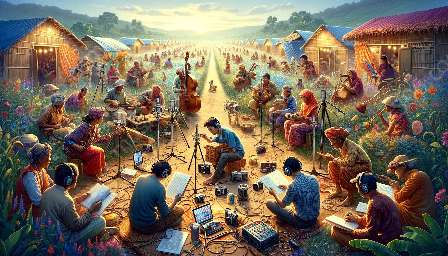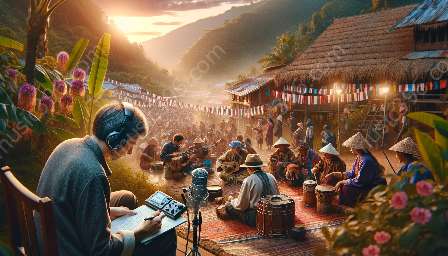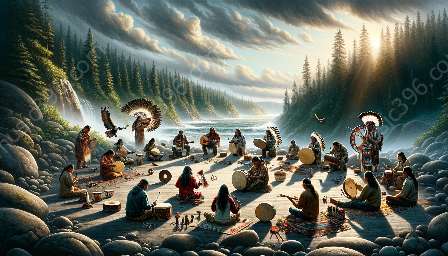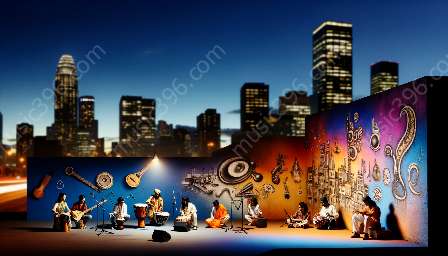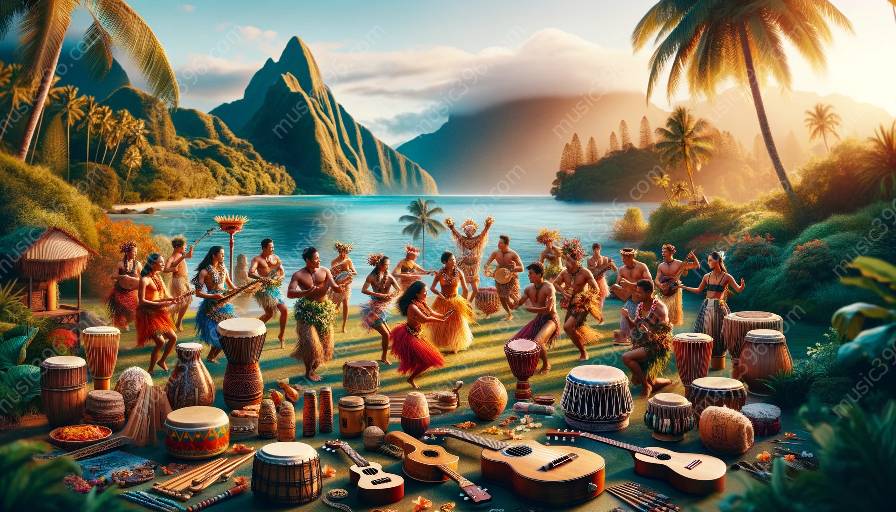The music cultures of the Pacific offer a captivating glimpse into the ways in which different societies resist, negotiate, and adapt to external influences and pressures. This exploration delves into the convergence of music, culture, and ethnomusicology, shedding light on the diverse and vibrant musical traditions found across the Pacific region.
Understanding Pacific Island Music Cultures
Pacific island music cultures are deeply rooted in the histories and traditions of the indigenous peoples, reflecting their connections to the natural environment, spirituality, and social structures. These musical traditions serve as a means of storytelling, preserving oral history, and fostering community cohesion. From the rhythmic beats of traditional drumming to the melodic chants and harmonies, Pacific island music embodies the rich tapestry of cultural expression.
Resistance to External Influences
Despite the remote locations of many Pacific islands, their music cultures have not been immune to external influences. Colonization, globalization, and the introduction of new technologies have posed significant challenges to the preservation of traditional musical practices. Yet, Pacific island communities have demonstrated remarkable resilience in resisting these external pressures, often using music as a tool for cultural preservation and resistance.
Preservation of Traditional Knowledge
One way in which Pacific island music cultures resist external influences is through the preservation of traditional knowledge passed down through generations. By actively engaging in cultural revitalization efforts, communities strive to safeguard their musical heritage from being eroded by outside forces. Ethnomusicologists play a crucial role in documenting and analyzing these efforts, contributing to the broader understanding of Pacific island music cultures.
Adaptation and Innovation
At the same time, Pacific island music cultures have shown a remarkable capacity for adaptation and innovation. The incorporation of new instruments, musical styles, and influences from neighboring regions has led to the evolution of indigenous music traditions. This dynamic process of adaptation reflects the resilience and creativity of Pacific island communities in navigating the complexities of external influences.
Negotiating Cultural Exchange
Amidst the tensions between resistance and adaptation, Pacific island music cultures engage in a delicate negotiation of cultural exchange. Interactions with external musical traditions, such as those brought by explorers, missionaries, and traders, have not only influenced Pacific island music but have also sparked new syncretic forms of musical expression. This negotiation process highlights the interconnectedness of global musical flows and the ways in which Pacific island cultures have actively shaped and reimagined external influences.
Interdisciplinary Perspectives in Ethnomusicology
From an ethnomusicological perspective, the study of Pacific island music cultures provides a rich opportunity for interdisciplinary exploration. Ethnomusicologists investigate the social, cultural, and historical contexts in which music is produced and experienced, offering insights into the complexities of resistance, negotiation, and adaptation within Pacific island societies. By engaging with local musicians, scholars, and community members, ethnomusicologists contribute to more nuanced understandings of the dynamic relationships between music, identity, and external influences.
Contemporary Challenges and Revitalization Efforts
Contemporary challenges, including rapid urbanization, changing demographics, and environmental pressures, continue to shape the landscape of Pacific island music cultures. In response, grassroots movements and cultural initiatives have emerged to revitalize traditional musical practices, promote intergenerational knowledge exchange, and address the impact of external pressures on musical sustainability. These efforts exemplify the agency and resilience of Pacific island communities in navigating complex socio-cultural dynamics.
Empowering Future Generations
Empowering future generations to actively participate in the preservation and innovation of Pacific island music is central to the ongoing revitalization efforts. Educational programs, community-based projects, and digital platforms have been instrumental in fostering greater awareness and appreciation of Pacific island music cultures both locally and globally. By nurturing a sense of cultural pride and belonging, these initiatives contribute to the continued resilience and adaptability of Pacific island music traditions.
Conclusion
In conclusion, the music cultures of the Pacific exemplify a tapestry of resilience, negotiation, and adaptation in response to external influences and pressures. Through the lens of ethnomusicology, this exploration illuminates the dynamic interplay of tradition and innovation, resistance and exchange, and the enduring vibrancy of Pacific island music. The ongoing preservation and revitalization efforts underscore the significance of Pacific island music cultures as living expressions of cultural identity and heritage, continually evolving in the face of external forces.


